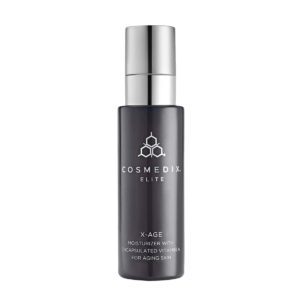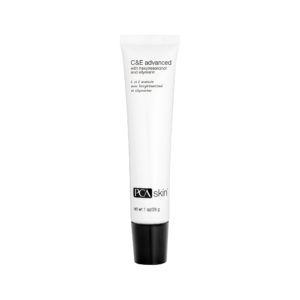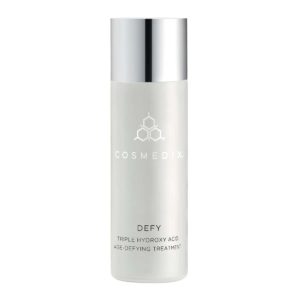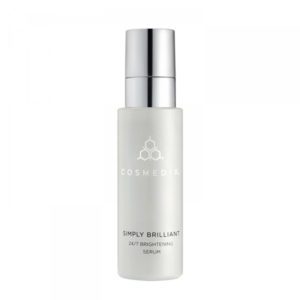
Spot On
From sun damage to age spots, freckles or pregnancy-related patchiness, Dr. Kate Jameson, Cosmetic Physician and the Medical Director of Youth Lab, Australia’s premier medical aesthetics clinic, has our go-to guide to overcoming pigmentation and uneven skin tone.
What is pigmentation?
One of the major skin concerns we have in Australia is premature ageing due to sun damage, also known as photo-aging. The hallmark signs of this are wrinkles, redness, coarse skin texture and discoloration of the skin and pigmentation.
Pigmentation can be a concern for almost all age groups and is often the first sign of sun-damaged skin, with changes often appearing in people in their 20’s with dark spots, blotchy discoloration and worsening of hormonal pigmentation. Pigmentation will worsen and become darker in the summer months. There are many types of pigmentation which can be caused by hormones (such as pregnancy or the contraceptive pill), sun damage, trauma and genetics.
For those of us living in warmer climates, or even going on holiday, pigmentation can become a daily concern. Anyone can suffer from premature ageing and pigmentation due to sun exposure. Those at higher risk include those who live in the tropics, at high altitude, work outdoors, engage in outdoor recreation activities and sports, have used sunbeds or solariums, have sunbathed for long periods or used tanning oils, and those who have fairer skin types.
What causes pigmentation?
There are special cells called melanocytes in the skin that make melanin, a pigment that controls the colour of our skin. The actual number of melanocytes within our skin is the same regardless of skin type, it is the production of melanin from these cells which determines skin colour. High levels of melanin cause darker skin and lower levels cause lighter skin.
Triggers for melanin production such as the sun, heat, injury and hormones cause the melanin to be produced in the deep layers of the skin. Melanin is then carried by special cells called keratinocytes to the skin surface, slowly rising through the layers to the skin to sometimes sit more superficially (such as freckles and sunspots). This is why some pigmentation is difficult to see and difficult to treat as it sits deep within the dermis of the skin.
How can you prevent it?
Pigmentation is best treated in a multifactorial way. The most important part of treatment is to remove the cause and the trigger of the pigmentation, that is decrease sun exposure and the effects of UV radiation of the skin. Treatments can then be focused on lightening and removing existing pigmentation which may be of a cosmetic concern as well as prevent further melanin production through inhibiting some of the melanin production pathways within the skin.
Commitment to treatment is essential and we always recommend a home care skin regime as well as treatments in the clinic, designed to treat the specific type of pigmentation.
The first steps in tackling the issue though are to implement strict sun protection with a daily broad-spectrum SPF sunscreen as well as sun protection with hats, use of shade and avoiding long periods when out in the sun.
Medical management of certain underlying causes must also be implemented at the same time as skincare and in-clinic treatments. Treating melasma such as changing hormonal contraception or treating any underlying hormonal disturbances should be done initially in conjunction with the patient’s GP, dermatologist or cosmetic physician.
What treatments reduce pigmentation?
The best treatments performed in clinic for pigmentation must be focused on removing the pigmentation physically or chemically, suppressing the development of future pigmentation being developed as well as protecting the skin from further pigmentation.
Treatment options are also tailored to the type of pigment (freckles vs hormonal pigment) as well as the skin type of the patient (darker skin types often have worse pigment but are at higher risk of developing post-inflammatory hyperpigmentation).
Chemical peels – Peels are a fantastic way to treat both superficial pigmentation from sun damage, deeper melasma and post-inflammatory hyperpigmentation. Peels containing alpha hydroxyl acids such as glycolic, lactic and mandelic acid are beneficial as are beta hydroxy acids such as salicylic acid. Other peels may also contain lightening ingredients such as Retinol, Resorcinol and antioxidants to brighten the skin. These work to gently exfoliate the superficial pigmentation as well as prepare the skin for penetration of lightening ingredients.
Skin needling – Microneedling uses tiny needles to penetrate the skin in a controlled way to stimulate the skin’s healing response. Traditionally used to treat scarring and fine lines, skin needling can also be used to break down superficial pigmentation as well as a way to infuse into the skin brightening serum infusions can help with superficial pigmentation and sun damage.
BBL / IPL – the BBL (broadband light) system can safely and effectively treat pigmentation, freckles, sun spots, lentigos, post-inflammatory hyperpigmentation, irregular skin tone and superficial hormonal pigmentation. BBL works to target the dark colour of melanin in the skin and works to break down the pigment through “photothermolysis”, the pigment then is gently lifted and sloughs off over the following days.
Laser – Lasers such as the Halo laser can work to either break-up pigmentation using heat and resurface the superficial layers of the skin, removing stubborn sun spots, freckles and superficial sun damage. In the hands of a skilled operator, lasers are the gold standard for sun damage induced pigmentation and can be used to treat melasma in lower settings.
Dermamelan – Dermamelan by Mesoesthetic is essentially a chemical peel that is worn as a mask for 8-12 hours. Once the mask is removed the powerful brightening and exfoliating ingredients get to work and the skin is resurfaced over a period of 1-2 weeks. One treatment is often sufficient but we recommend a second at 6-12 months for severe pigment.
What are the best products to help reduce pigmentation?
Committing to a home care regime to treat pigmentation is very important as it works to maintain the results from the in-clinic treatments. Products range from prescription-only to cosmeceutical over the counter products
The most important product is a broad spectrum SPF to be worn daily (preferably 50+). Sunscreen in a foundation is simply not enough. Those with severe pigmentation such as melasma need to apply throughout the day, every 2-3 hours.
Other products are brightening and lightening creams containing ingredients which help to slow down melanin production and lighten existing pigmentation. Those that inhibit further pigment formation are called tyrosinase inhibitors, the strongest being prescription Hydroquinone which we often use in cases of melasma or post-inflammatory hyperpigmentation. This product can have side effects such as sensitivity and with long term use cause complications so a course of 12 weeks at a time is more than enough.
Some preferred lightening ingredients and products are below:
Vitamin A (retinoids) – Topical retinoids work to increase cellular turnover and proliferation, as well as increase keratinisation and exfoliation. In turn, they can lighten superficial pigmentation by increasing the removal of pigmented cells but they also work to suppress the formation of new pigment. Prescription retinoids such as Tretinoin are available from doctors but lower concentration formations such as retinol and retinaldehyde also work well.
Cosmedix Serum 16, Cosmedix Elite X-Age

Vitamin C (L-Ascorbic Acid) – Vitamin C is a strong antioxidant but also works to inhibit the formation of pigmentation. It is powerful and brightening and can be used on all skin types. Don’t be fooled by lots of products containing vitamin C as the molecule is unstable, can oxidise quickly and is only effective in higher concentrations in the form of L-Ascorbic acid.
PCA Skin C and E Advanced

Vitamin B3 (Niacinamide) – Vitamin B3 is essential in most skincare regimes. Not only does it improve skin hydration, barrier function and sensitivity is also decreases the transport of melanin to the surface of the skin, slowing down the formation of pigmentation. This ingredient is also suitable for every skin type and I ensure all of my patients are using it.
PCA Skin Vitamin B3 Brightening Serum

Exfoliating agents such as AHA’s – Kojic acid is a strong tyrosinase inhibitor which is used more commonly in prescription lightening creams. Other hydroxyl acids which are effective in pigmentation include azelaic acid, mandelic acid and glycolic acid, all of which can assist in gentle exfoliation and removal of superficial pigment.
Cosmedix Defy

Non-prescription tyrosinase inhibitors – these include ingredients found within popular brightening serums and include tranexamic acid, licorice and resveratrol to name a few.
Cosmedix Simply Brilliant

Visit www.youthlab.com.au for more!





